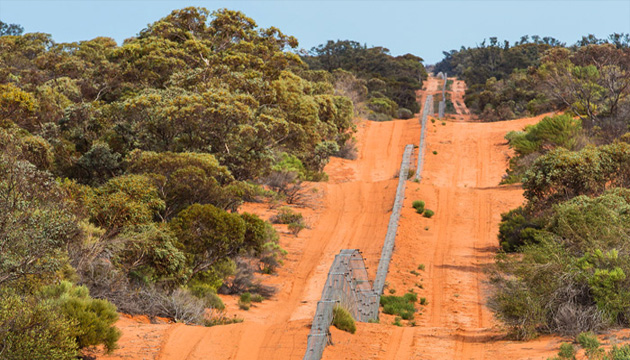Scotia Sanctuary in western New South Wales shows the arid lands as they were before feral animals got a hold.
Story By Nick Rains
Go through this gate and it’s like stepping back in time 200 years. It’s an ecological time capsule,” says Felicity ‘Flick’ L’Hotellier as she carefully pushes back the gate in the imposing 2-metre high electrified fence that encloses 4000 hectares of Scotia Sanctuary, known as Stage 1. “This is what the settlers and explorers would have seen back in the early 19th century.”
Flick is a full-time ecologist employed by the Australian Wildlife Conservancy (AWC) at Scotia Sanctuary, on the South Australian–New South Wales border, about 150 kilometres south of Broken Hill. Once used for grazing, the 650 square kilometre reserve was established by Dr John Wamsley’s Earth Sanctuaries in 1994 and bought by the AWC in 2002.
Outside the fence there are the usual obvious signs of big marsupials such as western grey kangaroos, but little else. Inside the fence, it’s a completely different story. The ground is covered with small holes and piles of sand – the diggings of several species of small marsupial scrabbling around for food.
“In the day you won’t see much (apart from these signs), but at night it’s a different story,” Flick says. “The place comes alive. People don’t believe me until they see for themselves. Numbats are one of the very few marsupials that are active in the daytime, but they are hard to spot. Wait till dark ...”
This story excerpt is from Issue #105
Outback Magazine: Feb/Mar 2016










